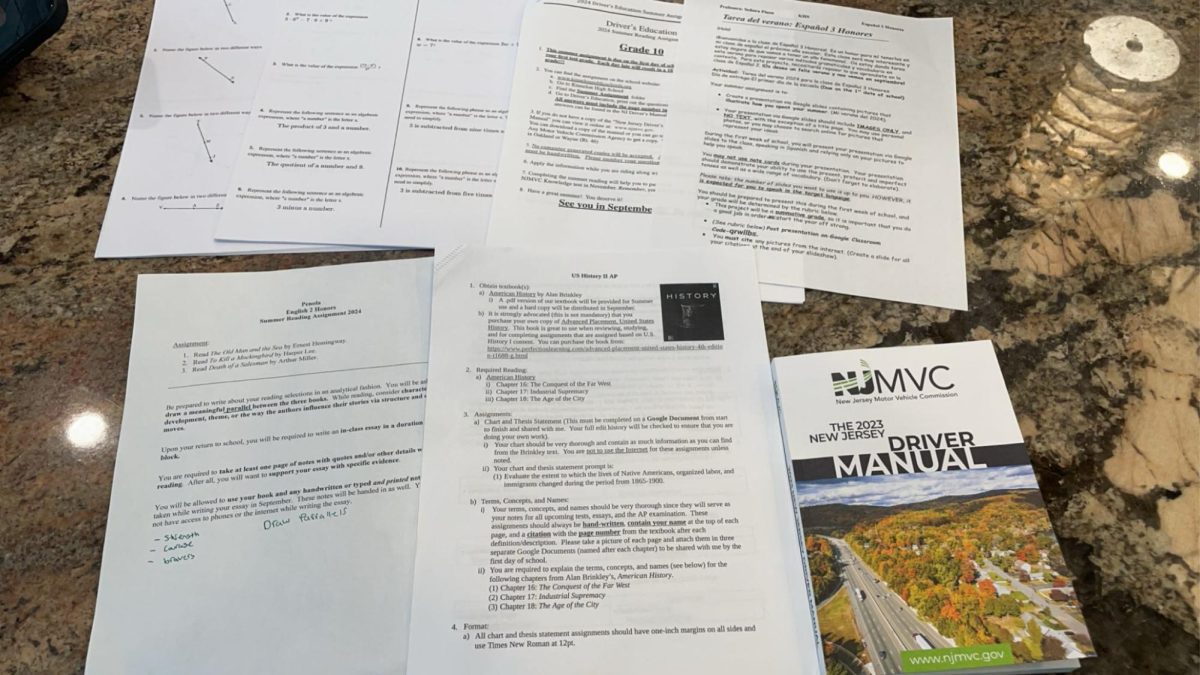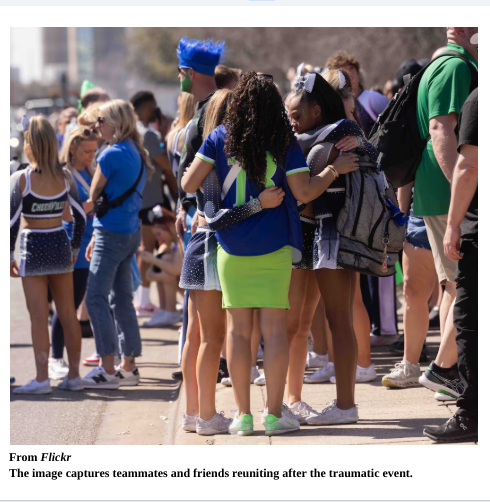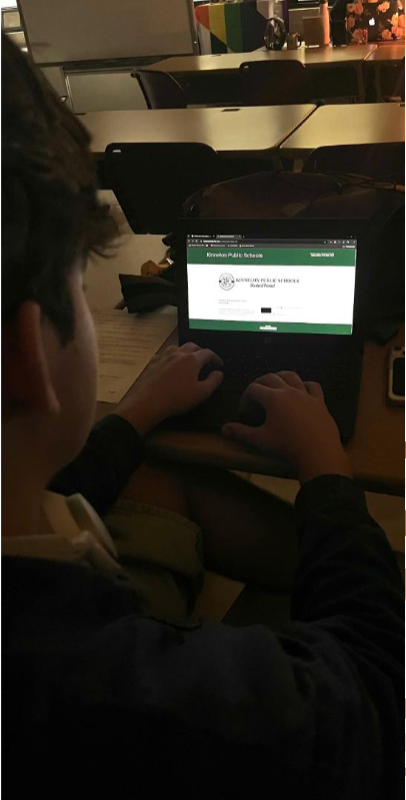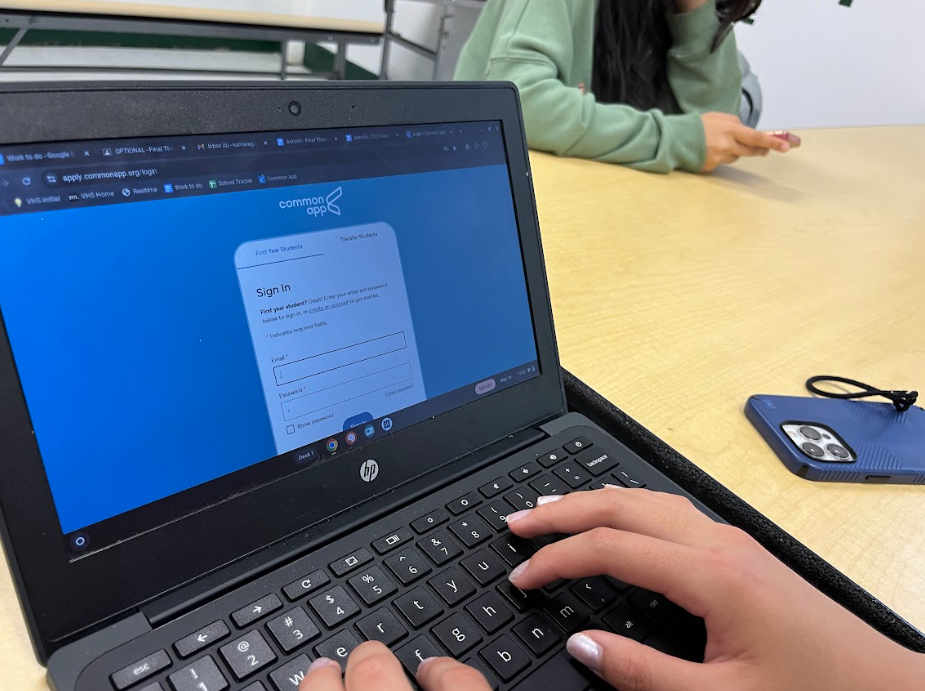Plastic tri-folds, medical masks, six feet of distance, and the disinfection of surfaces have been staples of the 2020-2021 school year. As school returns and restrictions are being dropped what should be the first steps towards normalcy?
To begin, plastic tri-folds are one of the more intrusive COVID policies this school year. Many students have voiced their discontent with the structures on their desks, and it intrudes on the workspace. Though plastic tri-folds are supposed to provide a barrier between larger viral particles spit out by students while talking, they end up being an unneeded redundancy to mask-wearing.
They are required by the administration, but many students wonder if the shields do anything at all. According to Forbes, “Once you understand that an aerosol doesn’t necessarily travel in a particular direction, it’s obvious why a barrier won’t block its movement.”
When wearing a mask, the weightier particles these shields protect against are already stopped from going anywhere. This makes precautions like shields not so useful in practice, especially when students are taller than the shields that are supposed to protect them. While the school returns to normal, this should be one of the first COVID protocols to go.
Medical masks have long been a staple of school life. They are required and are supposed to be worn correctly at all times. Of course, if someone is eating, drinking, or taking a mask break then teachers and administrators will be more lenient.
Although the eye test will tell you not everyone is wearing a mask properly, mask use is still nearly universal while in school. The FDA backs this up by saying, “If worn properly, face masks, surgical masks, or respirators may reduce the chance of spreading a COVID-19 infection between you and those around you.”
Mask wearing has been shown to help, but some still question how much it actually stops the spread. According to a study in Nature, “Both surgical masks and unvented KN95 respirators, even without fit-testing, reduce the outward particle emission rates by 90% and 74% on average during speaking and coughing, respectively, compared to wearing no mask.”
The evidence behind mask-wearing shows that if we are going to keep one protocol around for a while longer, let it masks. The disease cannot be spread if the particles do not leave your vicinity. Other measures can be pushed to the side as long as mask-wearing is universal and enforced.
For most of the 2020-2021 school year, six feet of distance has been the heavily enforced norm. Raising your voice to reach friends in the lunchroom and in the classroom is common practice with so much distance between everyone. School protocol keeps desks apart and puts blue tape on the bleachers at lunch to keep students from getting too close to each other.
Most evidence supports this practice. According to the CDC, “COVID-19 spreads mainly among people who are in close contact (within about 6 feet) for a prolonged period. Spread happens when an infected person coughs, sneezes, or talks, and droplets from their mouth or nose are launched into the air and land in the mouths or noses of people nearby.” By getting out of close contact, it reduces the likelihood of spreading COVID-19.
With new evidence, students do not need to follow these recommendations any longer. Due to overwhelming evidence of virtual school not being great for students, and plenty of studies pointing to school being safe, the CDC now says, “physical distancing of at least 3 feet between students can safely be adopted in classroom settings where mask use is universal and other prevention measures are taken.”
With schools getting filled with students again, the ability to distance only three feet allows for a greater number of teens back in school. This is another step closer to normalcy. Even though social distancing is an important preventative measure, schools are simply following the CDC guidelines which allow for the social distancing of only three feet for students.
The disinfection of surfaces and the inability to hand out papers force teachers and students to adapt the way they teach and learn. In Kinnelon High School, teachers are not handing out any papers, and in physical education, the objects are sanitized between every use.
This is done believing it will prevent the spread of COVID-19, but the virus is terrible at spreading on surfaces. According to The Lancet, “environmental contamination leading to SARS-CoV-2 transmission is unlikely to occur in real-life conditions, provided that standard cleaning procedures and precautions are enforced.”
The school can clean classrooms once a week, use standard cleaning practices on all the equipment for the gym, and hand out papers. COVID will more than likely die on those surfaces. The reintroduction of these measures will not lead to a massive increase in cases. In the school’s return to normal, a reintroduction of paper, pencil, and posters is vital.
The school’s measures are hit and miss when it comes to their agreement with the science behind those measures. All of them do help stop the spread to some extent, but with everyone eyeing normalcy it may be time to drop the tri-folds, slow down on the disinfectants, and shorten the distance we have to stay apart. Getting to normalcy is about reintroducing what used to be our reality, and these are the steps Kinnelon High School should take to get there.







